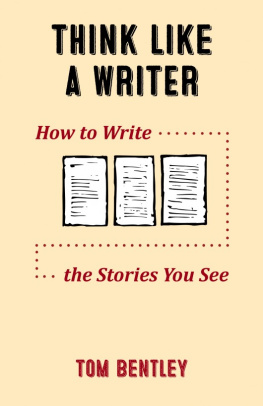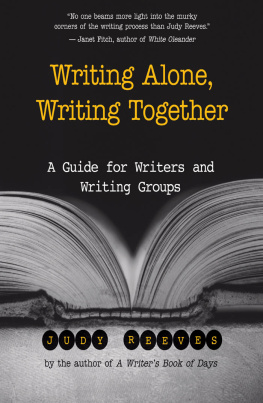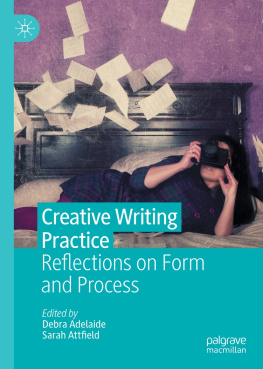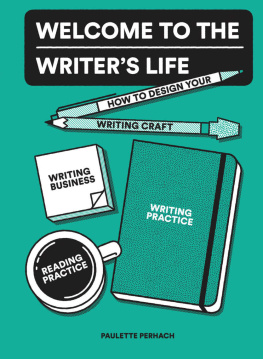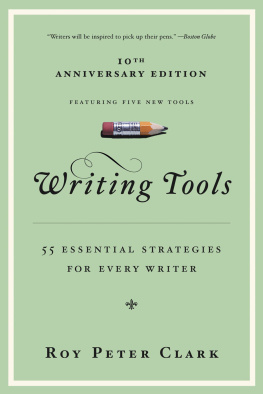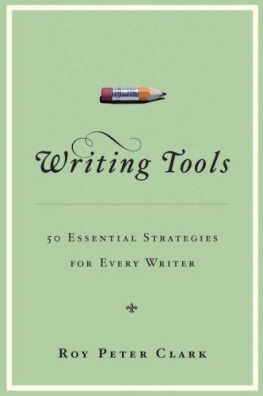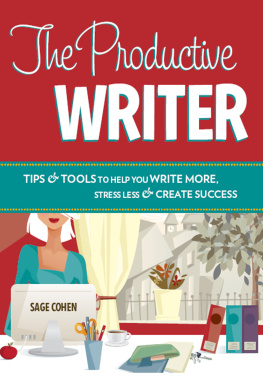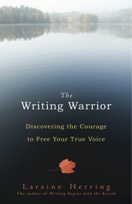Writing Workflows
Sweetland Digital Rhetoric Collaborative
Series Editors:
Anne Ruggles Gere, University of Michigan
Naomi Silver, University of Michigan
The Sweetland Digital Rhetoric Collaborative Book Series publishes texts that investigate the multiliteracies of digitally mediated spaces both within academia as well as other contexts.
Writing Workflows: Beyond Word Processing
Tim Lockridge and Derek Van Ittersum
Rhetorical Code Studies: Discovering Arguments in and around Code
Kevin Brock
Developing Writers in Higher Education: A Longitudinal Study
Anne Ruggles Gere, Editor
Sites of Translation: What Multilinguals Can Teach Us about Digital Writing and Rhetoric
Laura Gonzales
Rhizcomics: Rhetoric, Technology, and New Media Composition
Jason Helms
Making Space: Writing, Instruction, Infrastructure, and Multiliteracies
James P. Purdy and Dnielle Nicole DeVoss, Editors
Digital Samaritans: Rhetorical Delivery and Engagement in the Digital Humanities
Jim Ridolfo
digitalculturebooks, an imprint of the University of Michigan Press, is dedicated to publishing work in new media studies and the emerging field of digital humanities.
Writing Workflows: Beyond Word Processing
Tim Lockridge and Derek Van Ittersum
University of Michigan Press
Ann Arbor
Copyright 2020 by Tim Lockridge and Derek Van Ittersum
Some rights reserved

This work is licensed under a Creative Commons Attribution-NonCommercial-NoDerivatives 4.0 International License. Note to users: A Creative Commons license is only valid when it is applied by the person or entity that holds rights to the licensed work. Works may contain components (e.g., photographs, illustrations, or quotations) to which the rightsholder in the work cannot apply the license. It is ultimately your responsibility to independently evaluate the copyright status of any work or component part of a work you use, in light of your intended use. To view a copy of this license, visit http://creativecommons.org/licenses/by-nc-nd/4.0/
For questions or permissions, please contact um.press.perms@umich.edu
Published in the United States of America by the University of Michigan Press
First published December 2020
A CIP catalog record for this book is available from the British Library.
Library of Congress Cataloging-in-Publication data has been applied for.
ISBN 978-0-472-12726-9 (OA)
https://doi.org/10.3998/mpub.11657120
The publisher gratefully acknowledges the support of the Sweetland Center for Writing in making this project possible.
Contents
A web-based version of this project is hosted by the Sweetland Digital Rhetoric Collaborative and available at this link: http://www.digitalrhetoriccollaborative.org/books/writing-workflows
Introduction
First, A Narrative about Mediated Practice
Heres a common writing situation: A graduate student is tasked with writing a seminar paper. She starts with the literature review. She checks out books from the library, which she cant write in, so on the way home she picks up a set of Post-it notes and flags. She then reads, attaching Post-it flags to pages, using a color scheme to mark the most important points and references shed like to further explore. Later, shell type the flagged passages and store them in a note-taking application. A couple of frequently cited books spark her interest, and theyre related to a possible dissertation idea, so she orders them. When they arrive, she reads them carefully, underlining important passages and making marginal notes. She also works with PDFs and other digital texts, which she highlights using annotation software on her tablet computer. While doing all of this, she keeps track of her thoughts in a Moleskine notebook, developing the first threads of a paper topic. Soon she realizes its time to start writing, so she arranges her notes in piles, makes a few different document filesone titled Draft, one titled Outline, and one titled Referencesand gets to work.
As teachers of graduate students (and, of course, once being graduate students ourselves), weve seen many variations of this approach to writing. The above-mentioned student will find an ad hoc and idiosyncratic way to complete her project based on a mix of prior experience, personal needs, the technologies at hand, affective preferences, and the artifact to be delivered (among many other factors). And the student will draw on this practice for the next seminar paper, the next writing task, and so oncreating a routine, a personal and habitual approach to writing technologies and writing tasks.
Fig01. While looking at stock and Creative Commons photos for this project, we were struck by the many varying displays of mediating technologies. Here, for example, we see Post-it notes hanging from a computer monitor, more Post-its on the desk, a notebook, a keyboard, two pens, and headphonesnot to mention whatever might be running on the computer.
Research in the field of Writing Studies has excelled at capturing these many idiosyncratic approaches to writing.) ask What does computing look like in and across digital, networked spaces and the physical spaces our bodies inhabit as we compose? (Composing). The videos in On Multimodal Composing show a breadth of approaches to writing, with writers moving across technologies and through physical spaces. In her video for On Multimodal Composing, Layne M. P. Gordon describes a writing process that is highly multimodal and embodied, that relies on digital notes, handwritten notes, color, and visuals, as well as the inanimate objects that [she] surrounds herself with during a writing session (A Writing Session). Laynes video shows her working with Google Docs, Evernote, Apples Pages, and tablets of graph paper as she drafts. In another video in the online article, Michael Baumann documents the process of writing a slam poem, a collaborative process that begins with a huge messy crude constellations of ideas written by hand and that moves into typewritten documents by outlining, cutting and pasting, opening new documents to work on a section in isolation before inserting that section back into the main file. Adding line and stanza breaks. Working on different sectionsintro, middle, and conclusion in queered chronology (Creating a Slam Poem).
Similarly, in Expanding Literate Landscapes, Kevin Roozen and Joe Erickson () look at the composing processes of Lindsey Rachels, an undergraduate student whose writing process draws on her experience with art and design. Lindsey describes the process through which she wrote a literary analysis paper: spreading pages of notes across the floor, organizing them by topic, and then arranging them in groups on her desk. Her process, she says, had a hands-on patchwork feel that I associate with the crafting of a piece of artwork (Arranging American Literature).
Although much existing research has pointed to the specifics of writing processes and literate activity, the narratives of mediated writing processes are often presented as highly individual and idiosyncratic. The move to document those practices underscores the importance of individual approaches and the idea that mediated writing processes are personal, contextual, and bound up in experience, preference, and affect. The focus on the individual practice is also an echo of the process movement, which today resists the idea of one singular process being best, ideal, or universal. Yet this approach hasnt pushed usas writers ourselves


